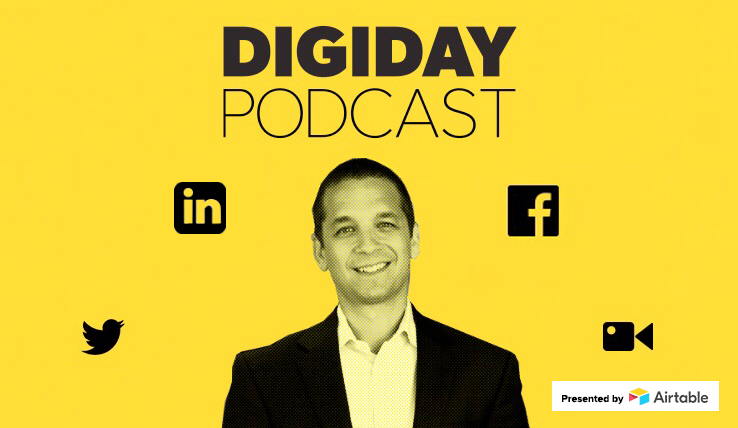Save 50% on a 3-month Digiday+ membership. Ends Dec 12.
LinkedIn’s Dan Roth: ‘We don’t want to burn newsrooms’

Subscribe: iTunes | Google Play | Stitcher | Anchor
The news industry has a love-hate relationship with platforms, but for LinkedIn, that doesn’t need to be the case.
“We don’t want to burn newsrooms,” said Dan Roth, editor-in-chief at LinkedIn, in this week’s episode of the Digiday Podcast. “We know what it’s like to come from a publisher where you’re sweating out the dollars every single day. You can bring that perspective into the product. Editors get to be involved in product decisions. Editors are the voice of publishers.”
Roth, a former editor at Fortune, discusses LinkedIn’s relationship with publishers, its differentiation from other social platforms, video and more in the episode.
Edited highlights appear below:
LinkedIn is not a trap
“The strategic goal [for LinkedIn] is to keep people coming back and feeling like they’re getting something valuable. You look for a job occasionally. You are always looking for ways to get ahead. If you’re thinking about economic opportunity, you come to LinkedIn every day to build you own voice or learn what’s happening in the world. The key is not to trap them in LinkedIn. It’s not about getting people to spend all their time on LinkedIn all day long.”
LinkedIn is not competition
“Everyone is competing for people’s time and attention. We are a competitor as much as “Candy Crush.” But we are not a competitor in that we send massive amounts of traffic to publishers. We do want people to publish original content on LinkedIn, but not the original articles. Invest in your reporters and editors who come in and talk about the story behind the story.”
LinkedIn is for normal people
“Twitter is an amazing place for journalists. LinkedIn is an amazing place for everyone else. Accountants and doctors are not on Twitter, but they use content on LinkedIn. One of the ways they use LinkedIn content is to connect. They send a story in their feed to people as an ice breaker. It’s [also] not a cynical platform. People think they have something to gain from this information, and they have a chance at climbing the ladder.”
More in Media

Workforce data, smarter AI integration among greatest workplace priorities in the new year
The growing importance of workforce data is just one of the prognostications people managers are making looking to the year ahead.

WTF is AI citation tracking?
Publishers are tracking AI citations to understand visibility, attribution gaps and referral traffic in these tools and platforms.

As big brands flood the podcast ad space, startups are refining strategies to stand out
While a influx of big advertisers is good news for podcast companies, it also makes it more challenging for small- to mid-sized brands to stand out in the space.








